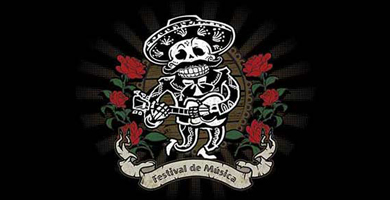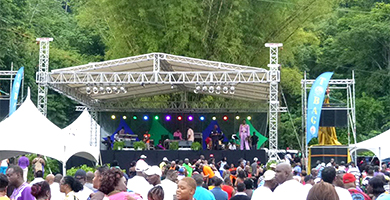Urban Adventure in Medellin, Colombia
Renowned architectural writer and contributor Michael Webb reports on his latest escapade in South America.
Medellin, the second city of Colombia, fills an Andean valley, and the temperature is spring-like year-round. It can also be very wet, and there are few of the attractions most tourists crave. In place of historic monuments and colonial streets, there’s an inspiring collection of new libraries, parks, plazas and schools. They demonstrate how progressive mayors, planners and architects have transformed a city that was, until recently, a synonym for drug violence as Ciudad Juarez is today. Urban adventurers will find much to admire here.
The Art Hotel in El Poblado is a good, centrally located place to stay. Rooms surround a skylit atrium in this crisply designed brick and steel block, and there’s a sheltered patio for breakfast and drinks. It’s a short taxi ride to the nearest station on the elevated Metro that bisects the city, north to south, with cable cars accessing the mountainside barrios at either end. Fast, safe, and spotless—these new links put public transport in many US cities to shame. And it’s a good way to experience the warmth and civic pride of the locals, who greet strangers as though they were old friends.
Visiting the hillside slums of Medellin is now a rewarding rather than a life-threatening experience. The nighttime ascent to Santo Domingo is as magical as the opening scene of Blade Runner. The city below becomes a glittering carpet of lights, the cars float silently by, and the three black crystals of the Biblioteca de Espana glow enticingly from the edge of an escarpment. The library is a showpiece, sponsored by the government of Spain, and opened by its king (who rode up on the cable car). The faceted concrete boxes containing books and performance spaces are clad in a gleaming black stone, and windows punched out at a sharp angle to emphasize the precipitous character of site. By day, you discover that parks, libraries and schools are stitched together with new roads and footpaths, to enhance an impoverished but vibrant community. Last year, a new cable car line was constructed, looping over the mountains from Santo Domingo to the Arvi National Park, thrilling visitors and giving residents a cheap excursion to the countryside on weekends.
As a few of the barrios were improved, the decayed center of Medellin was upgraded with a network of plazas, some landscaped with pools and fountains, linking a succession of public amenities. Standouts include the House of Music, a popular concert hall with a sloping plaza that serves as an outdoor movie theater on fine evenings, and the dramatically stepped reading rooms of EMP Library, overlooking a forest of illuminated columns in Plaza Cisneros. Avenida Orienta, a main highway that slices through the city, was enriched by vibrantly colored ceramics that clad a pitched median strip, which encourages pedestrians to cross the eight lanes of traffic at the lights and not mid-block.
Colombian architects competed to design four outdoor pools and four sports halls for the 2010 South American Games. Each pool has a specific role and is framed by poured concrete walls and ramps with extensive landscaping of native species in the spaces between. Undulating metal canopies in tones of green arch over an existing basketball court and three new spaces, and the perforated green metal walls allow everyone to peer inside. They are grouped to either side of an Olympic pool and a soccer stadium in the Atanasio Giradot sports complex, and are worth exploring even when no event is scheduled.
Close by, at the foot of the Universidad Metro station are two jewels of Medellin’s transformation. The Parque Explora is a popular science museum, with an aquarium that focuses on the ecology of the Amazon and Caribbean coral reefs. Loops of water dance around from one pavement spout to the next in the landscaped forecourt. Across the street is the lushly planted Jardin Botánico, whose star attraction is the Orquideorama, a soaring canopy that simulates a forest glade. Ten hexagonal “trees” comprising six steel columns and ribs are faced with slats of wood and support a glass-covered space frame, with orchid displays at the base. The park is intensively used. One Saturday morning a wedding party took over the Orquideorama, a volunteer led a conga line of blindfolded barefoot victims over grass and gravel for a sensory experience, and the patio de azaleas hosted a first communion service with balloons and box lunches. Adjoining the flower-filled patio is In Situ, an open-sided dining pavilion where specialties include ceviche of veal tongue and crisply fried creole chicken.
MEDELLIN DINING GUIDE
• El Hato Viejo, a handsome old house where waiters wear Panama hats and serve such basics as plantain soup, ceviche of sea bass and flank steak with a good choice of moderately priced wines. (Cra 49 #52-170 / Ph: 574 251 2196)
• La Cafetiere de Anita is a stylish but pricey place, where dinner might feature duck pate, seared tuna and rhubarb pie. (Calle 6 sur #42 A 92 / Ph: 574 311 3103)
• Carmen is the coolest restaurant in the city—for its lower-level dining room and patio and a highly original menu that includes slow-cooked pork belly with tamarind and very good duck confit. (Cra 36 #10A-27 / Ph: 574 311 9625)
• Montmar is a tiny hole in the wall serving spiced pisco sour in ladles, poached jumbo shrimp, and baked tuna with a cocoa sauce. (Cra 37 #10A-64 / Ph: 574 311 4050)
Michael Webb
around the world.
Latest posts by Michael Webb
- DESTINATION: Revisiting the South of France - April 30, 2024
- Exploring the Czech Republic - January 29, 2024
- Rediscovering Morocco - April 6, 2022











